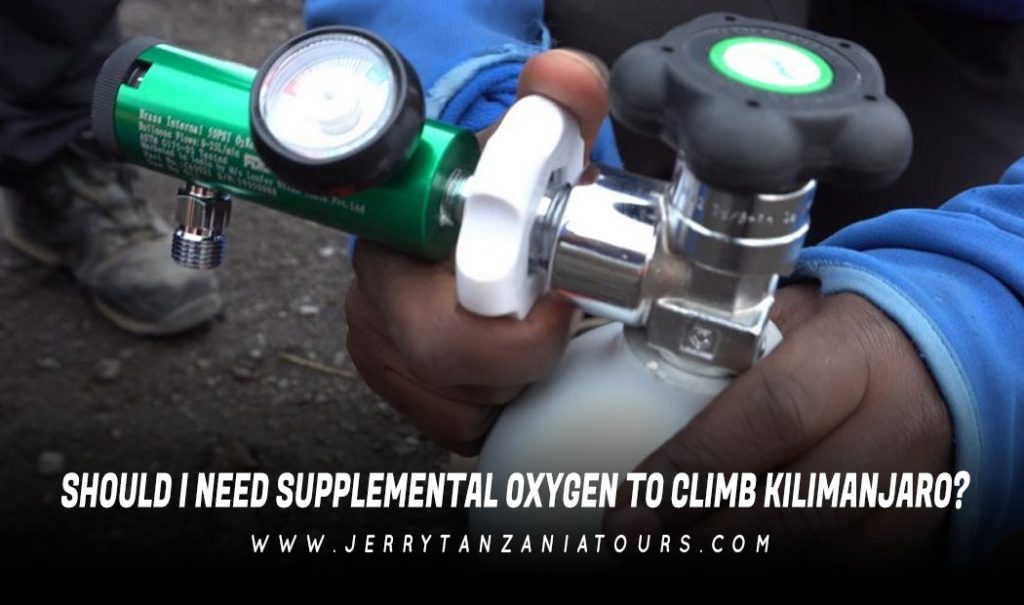
Should a supplemental oxygen cylinder be present in your Kilimanjaro Gear List? Absolutely Not. It eradicates all the purpose of climbing mountains. The challenge is to reach the Kilimanjaro Summit by undergoing all the challenges and overcoming them. Then only you will truly experience the beauty of Mount Kilimanjaro. The use of supplemental oxygen is unnecessary, but there are few exceptions where it is used.
WHY YOU SHOULD NOT USE SUPPLEMENTAL OXYGEN?
While Climbing Mount Kilimanjaro, the oxygen level gradually drops when you go higher. So you may find yourself gasping for air very often. But, it is very much advisable not to use the supplement as it may cause unnecessary health problems.
The reduction in oxygen causes Kilimanjaro Altitude Sickness, which can be fatal if you do not take proper precautions. The best way to cure it is to give yourself sufficient time for acclimatization. Drink lots of water and take a rest when you need it.
When you use supplement oxygen, you stop your body’s attempt to acclimatize. The more you go higher with supplement oxygen the more you make yourself a health risk. Normally supplement oxygen is needed at extreme altitudes (above 23,000 ft.). The summit of Kilimanjaro is 19,340 ft. tall, so it is absolutely unnecessary to use it.
WHERE CAN YOU USE SUPPLEMENTAL OXYGEN?
The only way using supplemental oxygen is permitted is when you are showing symptoms of Acute Mountain Sickness (AMS). If you are on a short route (4-5 days) for the Kilimanjaro Climb, you may not give your body enough time for acclimatization. Which will result in AMS, whose symptoms are: headache, vomiting, nausea, dizziness, loss of appetite, etc. This could be fatal, if not treated properly.
The tour guides/operators provide you oxygen in such emergency cases only. You don’t have to include a separate oxygen cylinder in your Kilimanjaro Packing List. The symptoms are your body’s way of telling you not to go further and it’s time to descend. After taking supplement oxygen you shouldn’t try to move higher. Even if it relieves you from the oxygen deprivation, it reverses the acclimatization process.
Once you take the oxygen, the climbing will get tougher and tougher, even if you have all the necessary gear for your journey. Your tour guide will monitor your health and make the decision of whether you should continue your climb or not.
HOW DOES LACK OF OXYGEN CAUSES ALTITUDE SICKNESS?
The oxygen percentage in the air is constant at all altitudes (21%). At sea level, the weight of the air is compressed making it denser. While Climbing Mount Kilimanjaro, the gain in the gradual elevation makes the air less compressed and is hence thinner.
The height of Mount Kilimanjaro is nearly 19,340 ft. and the symptoms for Altitude Sickness/Acute Mountain Sickness (AMS) start appearing from 8,000 ft. and intensifies as you go higher. The only way to lessen the symptoms is to hydrate yourself frequently.
Acute Mountain Sickness (AMS) can also lead to High Altitude Pulmonary Oedema and Cerebral Oedema, which can be fatal. This is why the tour operator brings emergency oxygen cylinders with them. If the symptoms gradually increase, the tour operator makes the decision to provide you with the supplement oxygen with immediate descend. The oxygen is only given when the climber is not capable to go any further and is administered only for the rescue operation.
From the above-mentioned points, it is perfectly clear that you should definitely NOT bring your own supplemental oxygen while Climbing Mount Kilimanjaro. The use of supplemental oxygen will have a negative impact on your health while ascending. If you will really need it, your tour operator will provide it to you in emergency conditions. Contact Jerry Tanzania Tours today for Kilimanjaro Climbing packages and the supplements needed during the ascent!
